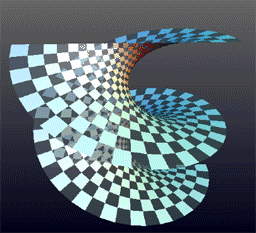|
Kodak Signet
The Kodak Signet series of 35mm cameras''Kodak Signet 35 Camera'' manual, Eastman Kodak Company, September 1951 was Kodak The Eastman Kodak Company (referred to simply as Kodak ) is an American public company that produces various products related to its historic basis in analogue photography. The company is headquartered in Rochester, New York, and is incorpor ...'s top American-made 35mm camera line of the 1950s, into the early 1960s. The designs were by Arthur H Crapsey. The first model was the Signet 35 made between February 1951 - March 1958. The Signet series was positioned above the 35mm Pony series, and below the German made Kodak Retina series of cameras. The models were the Signet 30, Signet 35, Signet 40, Signet 50, and Signet 80. Only the 35 and the 80 had an integral rangefinder, with the latter accepting interchangeable lenes. All used a significant amount of plastic except the Signet 35 which was machined from an aluminum casting, and shared style and dur ... [...More Info...] [...Related Items...] OR: [Wikipedia] [Google] [Baidu] |
Kodak
The Eastman Kodak Company (referred to simply as Kodak ) is an American public company that produces various products related to its historic basis in analogue photography. The company is headquartered in Rochester, New York, and is incorporated in New Jersey. Kodak provides packaging, functional printing, graphic communications, and professional services for businesses around the world. Its main business segments are Print Systems, Enterprise Inkjet Systems, Micro 3D Printing and Packaging, Software and Solutions, and Consumer and Film. It is best known for photographic film products. Kodak was founded by George Eastman and Henry A. Strong on May 23, 1892. During most of the 20th century, Kodak held a dominant position in photographic film. The company's ubiquity was such that its " Kodak moment" tagline entered the common lexicon to describe a personal event that deserved to be recorded for posterity. Kodak began to struggle financially in the late 1990s, as a result of th ... [...More Info...] [...Related Items...] OR: [Wikipedia] [Google] [Baidu] |
Rangefinder
A rangefinder (also rangefinding telemeter, depending on the context) is a device used to measure distances to remote objects. Originally optical devices used in surveying, they soon found applications in other fields, such as photography and in the military. They were specially useful for finding the range of a target, such as in naval gunnery and anti-aircraft artillery. The word ''telemeter'' is derived . Designs The first rangefinder telemeter was invented by James Watt in 1769 and put to use in 1771 in surveying canals. Watt called his instrument a micrometer, a term now used with a different meaning in engineering (the micrometer screw gauge). It consisted of two parallel hairs in the focal plane of a telescope eyepiece crossing an upright hair. At the point to be measured, two sliding targets on a surveyor's rod were adjusted to align with the hairs in the telescope. The distance to the rod could then be determined from the distance between the targets on the ro ... [...More Info...] [...Related Items...] OR: [Wikipedia] [Google] [Baidu] |
Helicoid
The helicoid, also known as helical surface, after the plane and the catenoid, is the third minimal surface to be known. Description It was described by Euler in 1774 and by Jean Baptiste Meusnier in 1776. Its name derives from its similarity to the helix: for every point on the helicoid, there is a helix contained in the helicoid which passes through that point. Since it is considered that the planar range extends through negative and positive infinity, close observation shows the appearance of two parallel or mirror planes in the sense that if the slope of one plane is traced, the co-plane can be seen to be bypassed or skipped, though in actuality the co-plane is also traced from the opposite perspective. The helicoid is also a ruled surface (and a right conoid), meaning that it is a trace of a line. Alternatively, for any point on the surface, there is a line on the surface passing through it. Indeed, Catalan proved in 1842 that the helicoid and the plane were the only rul ... [...More Info...] [...Related Items...] OR: [Wikipedia] [Google] [Baidu] |



